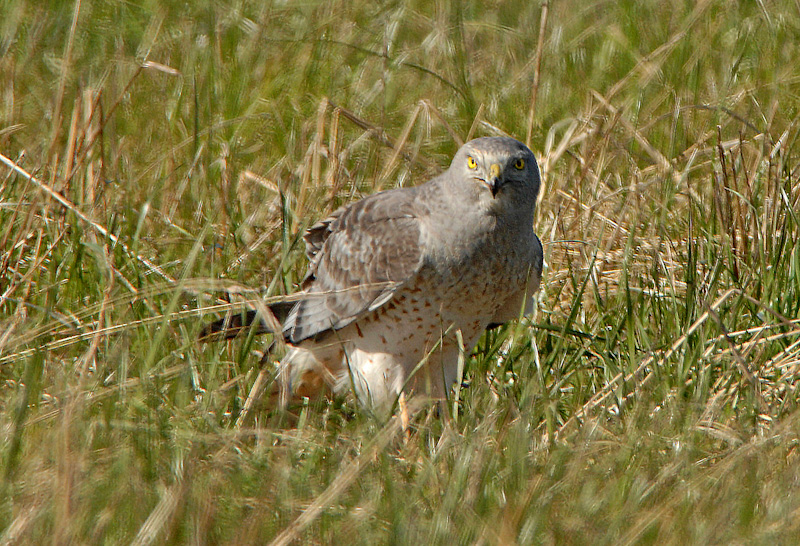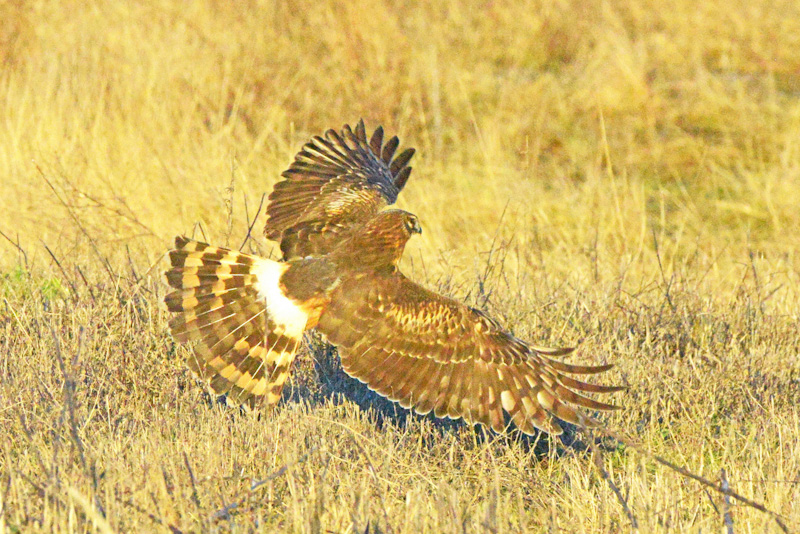

Photo and Commentary ©2024 by Robert Howson
Tuesday, April 2, 2024
The Northern Harrier is part of the genus Circus which is simply a reference to circle, an apt way to describe the flight of this raptor. Formerly known as the Marsh Hawk, this hunter flies low over marshy areas and open fields on wings held high forming a shallow V. Through a series of wing beats, followed by a short glide, it circles close to the ground in search of voles and other small mammals that make up 95% of its diet. Unlike most other hawks, it detects its prey primarily by hearing which necessitates its flying close to the ground. When such sounds are detected it drops quickly, but if unsuccessful, will rise again to continue its search. Such behavior caused the name Harrier to be used for a family of jet-powered attack aircraft that were employed a generation ago. They were capable of vertical/short takeoffs and landings which allowed them to be employed in areas without conventional landing strips.
The name Harrier simply means hunter and while there are several kinds of harriers in Europe and Asia, North America has just this single species. As with most raptors, the female is considerably larger than the pale gray male. She, in contrast, is predominately brown. The larger females aggressively exclude males from the best feeding areas except during the breeding season. Perhaps as a result of having a greater food supply, females usually outnumber males in any sizeable population. To counterbalance this, the Northern Harrier is one of the few raptors to practice polygyny where a single male mates with several females.
All of nature, including humanity, is subject to unintended consequences. When one variable is adjusted, other repercussions follow. For mankind, the most obvious example of this is Eve’s taking a bite of the “apple”. She, of course, had no idea of the dire results that would follow her decision. Instead, she was asked to trust her Creator who promised only the best for her should she remain loyal to Him. While it might be suggested that the harrier has managed to make do with its unusual lifestyle pattern, the same could not be said for humanity. Of course, the bird’s dilemma was not based on a moral choice while mankind’s was. The good news is that by our own choices we can reverse that awful pattern should we elect to accept the price already paid for us that covers Adam, Eve, and you and me.
